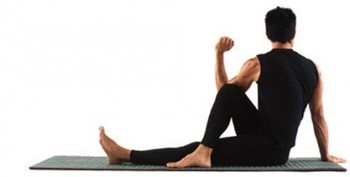Back to Basics
When most people think of their back, they imagine their lower back. This is very understandable considering the prevalence of low back pain in our country. Some think of their spine when referred to the back. Others even think of their shoulder blades. What we must understand is that the back musculature is vast, intricate, critical for respiration and function and it must be respected.
The muscles of the back actually provide the connection between the torso and its relationship to the head and neck. They also act as a bridge to the pelvis and lower extremities. Although the back is not considered one of the glamour muscles like those of the chest and arms, their function is paramount to every sport and most activities of daily living. The back musculature pulls the shoulders back, which helps posture and expands our rib cage for breathing. To obtain the benefits related to a strong, sculpted and efficient back, we have to understand some basic concepts.
On a basic anatomical level, our back muscles are broken down into superficial and deep muscles. The bigger, superficial muscles like the lats, traps and rhomboids can be trained in two major planes of motion: vertical and horizontal. In the vertical plane, there are lat pull downs, chin-ups and pull-ups.
In the horizontal plane there are a multitude of rowing exercises like the one arm dumbbell row or the seated bilateral row. With these exercises, make sure to constantly change your grip in order to stimulate different muscle fibers and try to stay away from behind the neck pull downs and pull-ups.
Furthermore, they tend to put undue stress on the neck and shoulders unless you have great flexibility in these areas. If you can’t seem to manage any type of pull-up and you have been left hanging many times, then try doing them in a negative fashion or find a Gravitron%u2030. The positive to negative ratio is 1:1.4. This means if you can lift 100 lbs. positively, then you can lower 140 lbs. negatively.
By taking advantage of these ideas you have solidified half of your workout. The deeper or intrinsic muscles also require special attention and account for the other part of your workout.The lower back muscles, usually referred to as the Erector Spinae and the Transverso-Spinalis muscle groups, span from the lower to the upper spine making a multitude of connections along the way up to the base of the skull.
To train the erectors one can perform spinal extensions in many planes on the standing 45 bench or a Glut-Ham Machine. Another idea is to do reverse leg raises off a flat bench. If these are too advanced, one may assume the quadruped position and try to lift and lower your limbs against gravity.
Just make sure that your pelvis and lower back stay relatively stable and straight during this exercise. Don’t hyperextend your low back and don’t swing your arms and legs higher than your torso.To add the final touches to your back routine it is imperative to comprehend the body’s natural corset. This will also help to strengthen your CORE and provide the lower back with the support it needs for functional activity.
There is an anatomical connection between the deepest layer of stomach muscles and the muscles of your lower back.The importance of these two structures is that when they contract, they form a co contraction, hugging the low back, offering rigidity and support without any external belts or devices. It is also well documented that any upper or lower body movement is preceded first by a contraction of these muscles, proving their importance. To train this muscle group, it requires concentration and good control of your body.
To begin, try to pull your stomach in as if someone were going to give you a punch in the gut. Actually pull your stomach away from your pants. If you don’t see your stomach tighten and move inward then try the Arnold Schwarzenegger vacuum exercise. This is where you suck in your stomach so far that your body, from the side, looks as if you haven’t eaten in days.
The main objective is to draw your belly in. But don’t hold your breath. These are exaggerations of the exercise and Arnold used to do this for competitions to make his waist line look smaller. If you can be conscious and learn to perform a contraction of the deep abdominal muscles you will learn how to save your lower back from a lot of grief.
Here are some other ideas to change it up while training the back.
Use the Rope to do pull-ups or even a towel. Try Two Arm Dumbbell Pullovers (thumbs up). Try Stiff Arm Pull Downs with the straight bar on your knees. During pull-ups, hike your hips up on one side during one rep and the other sideduring another. This just further aids in the muscle contraction on each side. Don’t forget to squeeze your muscles with any type of row.
Hold the contraction for at least 2-3 seconds. Explore Yogas method of strengthening the back. Learn to stretch every muscle in your back. Think angles. Pull-overs are known to be the best overall exercise for the upper body, analogous to the squat in the lower body. Try stand in between the cable crossover machine and pull both your arms down to your sides at attention or slightly behind the plane of your body. Don’t forget about contracting the deeper abdominal muscles during all exercises.

